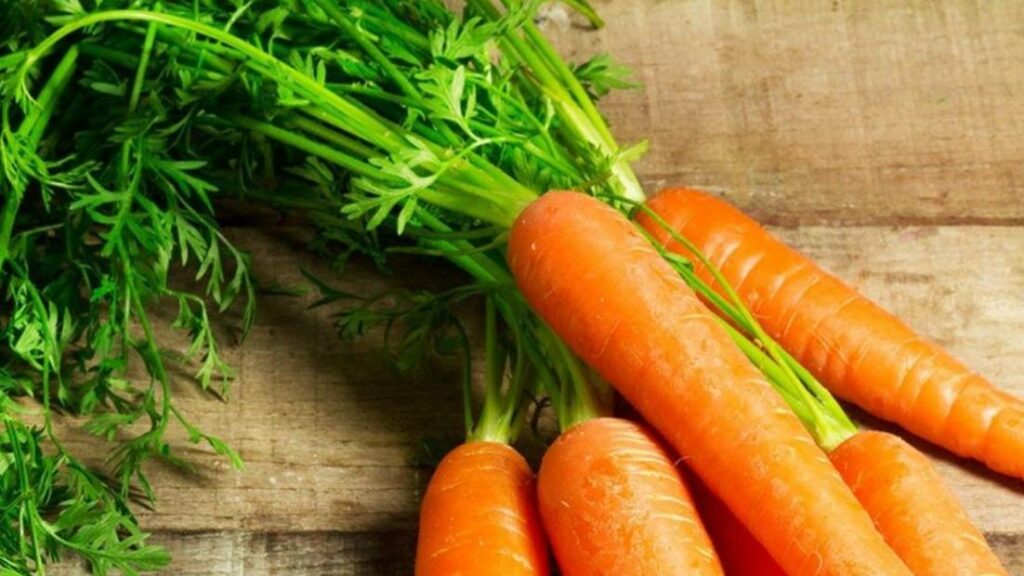Carrot leaves, also known as carrot flora or carrot blanket, are lush green corridors down from the tops of carrots. These leaves are often overlooked and thrown away, but they are edible and offer several health benefits. Here are some benefits of carrot leaves.
Benefits of carrot leaves
Rich in nutrients
Carrot greens contain many essential nutrients, including vitamins A, c, and k, as well as similar minerals like calcium, potassium, and magnesium. Generic Cialis and Buy Generic 100mg Viagra Online Vitamin A is essential for maintaining healthy vision, vulnerable function, and healthy skin, while vitamin C is an antioxidant that supports vulnerable systems and collagen production. Vitamin K plays a role in blood clotting and bone health.
Antioxidant pack
Carrot leaves contain colorful phytochemicals, including flavonoids, carotenoids, and phenolics. These antioxidants help neutralize dangerous free radicals in the body, reduce oxidative stress, and reduce the risk of common diseases.
Promotes digestion
The fiber content in carrot leaves can aid digestion and support a healthy digestive system. Fiber adds bulk to coprolite and promotes regular bowel movements, reducing the risk of constipation. Supports bone health
Green carrots are a good source of vitamin K, which plays an important role in bone health by promoting proper calcium absorption and reducing urinary calcium loss.
Anti-inflammatory pack
Some studies suggest that green carrots may contain anti-inflammatory agents. Consuming foods that contain anti-inflammatory packets can help reduce inflammation in the body and potentially reduce the risk of common inflammation-related illnesses.
Used for cooking purposes
Carrot leaves can be used in colorful culinary activities, such as in salads, smoothies, frosting, and pesto sauces. They add a unique flavor and texture to dishes and are a great way to reduce food waste. However, it is essential to remember that some people may have an aversion to carrot greens or experience mild adverse reactions. However, start with a small amount and cover up your body’s reaction if you have never eaten carrot leaves before. Also, always make sure that the carrot leaves you eat are fresh and well-washed to avoid impurities.
Overall, green carrots can be a nutritional addition to your diet and offer many health benefits when consumed as part of a varied and balanced diet.
Carrot leaf nutrition
Carrot leaves, also known as carrot flora or carrot peel, are actually a nutritional part of the carrot plant. Although nutrient content can vary slightly depending on factors such as carrot size, age, and growing conditions, the greens of carrots generally provide the following nutrients:
Vitamins Carrot leaves are a great source of colorful vitamins, including vitamin A, vitamin C, and vitamin K. Vitamin important for maintaining healthy vision, vulnerable function, and healthy skin.
Vitamin C is an antioxidant that supports system vulnerability, collagen production, and overall health.
Vitamin K is needed for blood clotting and bone health.
Minerals Carrot leaves contain essential minerals that contribute to the colorful physiological processes of the body.
Calcium is important for strong bones and teeth, muscle function, and muscle health. Potassium was important for maintaining good heart function, muscle compression, and fluid balance.
Magnesium plays a role in more than 300 enzymatic reactions in the body and aids muscle contraction and function.
Carrot leaves contain colorful phytochemicals with antioxidant cells, similar to carotenoids, flavonoids, and phenolic compounds. These antioxidants help neutralize dangerous free radicals, reduce oxidative stress, and potentially reduce the threat of habitual conditions.
Carrot leaves also provide beneficial fiber, which helps promote healthy digestion and a chronic intestinal tract. It’s important to note that carrot greens are not usually eaten in the same large quantities as other healthy greens, such as spinach or kale. However, they can be used as an occasional addition to salads, frostings, or smoothies to increase nutrient content. When using carrot tops in culinary practices, make sure they are fresh, thoroughly washed, and come from a trusted organic source.
As with any food, individual nutritional and dietary needs can vary. However, you should consult a dietitian or healthcare professional before making any major changes to your diet, if you have any particular health concerns or commitments.
Carrot leaves served
While carrot greens may be nutritious and beneficial for many people, there are many benefits and considerations that have not been taken into account.
Unfriendly reaction
Some individuals may have an aversion to certain synthetic materials established in carrot leaves. Aversion reactions can vary in degree of inflexibility and may include similar symptoms such as itching, rash, hives, swelling, or difficulty breathing. If you have an aversion to carrots or other foods in the Apiaceae family (e.G. Parsley, celery), it’s best to avoid eating green carrots.
Toxic
Carrots contain small amounts of alkaloids and other compounds that can be mildly toxic in large amounts. Although small amounts of carrot greens are generally safe to eat, consuming very large amounts can lead to digestive upset or other side effects. Moderation is very important when incorporating green carrots into your diet. Fungicides and pollutants
However, there may be a threat of residual fungicides or other contaminants, if the carrot greens come from conventionally grown carrots. Always make sure that the greens of the carrots are washed thoroughly, and if possible, choose organically grown carrots to reduce your exposure to potentially harmful chemicals.
Oxalate
Like many lush flora, carrot leaves contain oxalates, which are natural compounds that can contribute to the formation of monuments of order in susceptible individuals. However, it may be a good idea to consume carrot tops in moderation or avoid them altogether, if you have a history of scurvy or are at risk of developing them.

